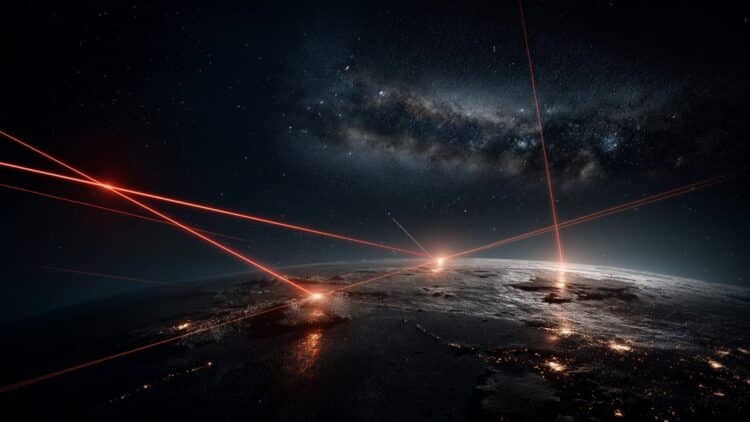Anyone would say that hitting a moving object 130,000 km from Earth with a laser beam would be impossible. However, in April 2025, Chinese scientists achieved this feat, which could redefine the future of space exploration.
When we talk about satellite laser telemetry, it may not mean much to most people, but it is a milestone, not only because of the distance, but also because the test was successfully carried out in broad daylight. We will tell you more about how China’s Deep Space Exploration Laboratory (DSEL) managed to achieve this technological miracle.
Measuring distances with laser accuracy
The technology they used is known as Satellite Laser Ranging (SLR). It is the large-scale version of all those laser tools used to measure apartments and interior spaces. Instead of measuring your new kitchen countertops, this laser was designed to measure the exact distance between a point on Earth and an object in space, such as a satellite or the lunar surface.
To do this, they had to choose a ground station, in this case the Yunnan Observatory in China. From there, they fired a high-powered, short-duration laser pulse toward the target (if they had left it on for long enough, we assume they would have fried the satellite they were aiming at).
For laser measurement to work, the satellite must be equipped with a retro-reflector, a kind of space mirror that ensures that the laser pulse is reflected directly back to the source. But how do they measure the distance? They simply calculate the time; by measuring the exact time it takes for the light pulse to travel back and forth, Chinese scientists were able to calculate the distance with centimeter precision. This level of accuracy is ideal for mapping the shape of the Earth and monitoring orbits.
History of Telemetry
Laser telemetry is not new, and its most famous origins are found on the moon. NASA’s Apollo missions—beginning with Apollo 12—installed the first retro-reflectors on the lunar surface. This experiment, known as lunar laser ranging (LLR), allows scientists on Earth to measure the exact distance to the moon. You may remember the episode of The Big Bang Theory where they send a laser to the moon; this is exactly what those retro-reflectors are used for.
LLR data was used to confirm the theory of general relativity and has shown that the moon is slowly moving away from Earth. However, LLR and traditional SLR had fundamental limitations, namely that they could only be performed successfully at night—or at best—during twilight.
This is because the laser that reflects off a distant object and returns to Earth has an incredibly weak signal. One of the biggest obstacles to daytime laser telemetry in deep space is solar background noise: during the day, intense sunlight floods the sky, weakening the return pulse until it is completely lost.
It’s like trying to shine a flashlight in a fully lit football stadium… You’re not going to notice that particular little light. However, the Chinese team managed to fire their infrared laser beam at the Tiandu-1 test satellite, achieving a technological milestone in space.
New space technologies
While the space race of the last century was between the United States and the Soviet Union, it seems that China now has the most ambitious lunar program. The telemetry experiment was conducted using a 1.2 m telescope with advanced filters and sensitive detectors in the infrared spectrum. This system was able to effectively filter out background noise generated by sunlight and successfully isolate the return signal from Tiandu-1.
By being able to track satellites even during the day, scientists can now track the satellite 24 hours a day. This doubles the observation window and allows for much more consistent and detailed orbital data collection.

